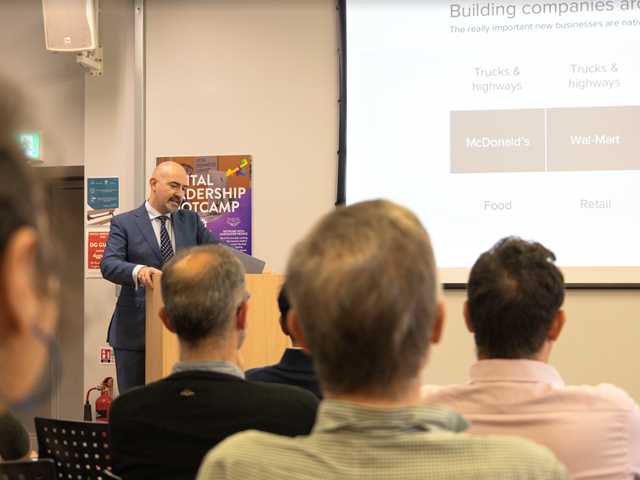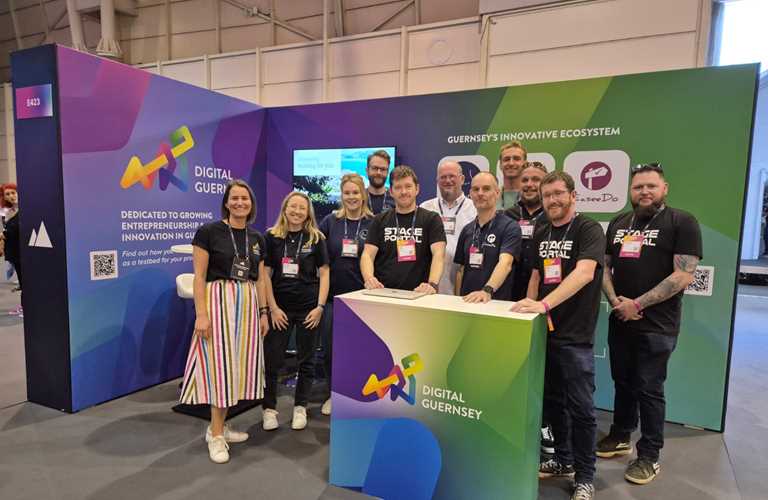Speed up your success, 4 common barriers to growth and how to overcome them
During Global Entrepreneurship Week 2022, Dr Jamie Coleman, technology entrepreneur and Guernsey Venture Challenge judge explored a successful startup's essential traits and elements.
Former CoFounder of the UK's largest tech incubator, CodeBase, Dr Jamie Coleman has seen many ventures formed and launched over the years - raising in excess of $750 million dollars of investment and creating over 3,000 new jobs in Edinburgh in the last 7 years alone - and has seen mistakes made and leading behaviours and decisions secure a businesses future.
At the what a business needs to succeed breakfast event, we gathered to hear the latest customer trends and strategies such as staying true to your mission and keeping on top of the innovation curve.
In our article below we will explore the 4 common barriers to growth highlighted by Jamie and how to overcome them.
A successful business will look different from venture to venture, but it is with knowledge and characteristics like tenacity, strong vision, adaptability and the ability to empower those around you that you will find your business rewarding regardless of the industry and the stage of your journey. When it comes to running a successful business, it is always important to learn to walk before you run, without planning ahead you may be setting yourself up to fail. With the help of well-thought-out strategies and a hardy business plan, you will be able to transition from a walk to a run and track growth along the way.
As trends and reports this year have shown, the future of small & medium businesses is local - harnessing the power of community, even an online one - and understanding the power of personalisation and making your data work for you. To do this you will need to ramp up your marketing efforts, taking advantage of the digital tools online to reach your customer at whatever part of the customer journey they are on. Failing to engage with technology - where our customers can be found even if they only buy in your brick-and-mortar store - will hold your business back as your competitors enter a league of their own.
Ultimately businesses of any size will start to grow naturally and may hit certain barriers along the way. In our article below we will explore the 4 common barriers to growth highlighted by Jamie and how to overcome them.
"Most of the success I have seen is from people who watch and study their industry to really shape their product or service"
Dr Jamie Coleman
Barrier #1: Hiring
Only hire when it is so agonising for you not to! According to Indeed's SMB survey, 56% of small businesses find it difficult to find the right employee for their business. Moreover, they compete with large enterprises for talent, finding it hard to pay more for the right candidate and having less time and fewer resources to dedicate to attracting the top talent.
Create your hiring plan with the following things in mind:
- Focus on writing well-defined job requirements and expectations. It is not just about what you can derive from the candidate, but what you can offer them. Tell them why they should join you starting with professional learning and career growth opportunities.
- Showcase your branding and benefits. With 60% of our waking days spent at work, employees often associate themselves strongly with the brand they work for. These days, people want to work for a company known for its excellent culture and focus on employee happiness. The latest Randstad Workmonitor research found that a significant number of Gen-Z and Millennials say they prioritize happiness over a larger paycheck with a whopping 56% saying they would quit a job that prevented them from being happy.
- Save time on hiring with a pre-screening process. Take time to filter out any great prospects from any not-so-great ones with a quick pre-interview phone call, this can be a great way to know how they handle themselves professionally and their actual interest levels in the role.
- Run a quick Google search! Sometimes, a simple Google search can reveal a lot about a prospective employee's skills and character, like portfolios, social media platforms, causes they support, as well as how they interact with the people around them offline and online.
If you would like more information on hiring check out Insight #2: Set up your dream team in our Business Insights From Guernsey’s Entrepreneurs article.
Barrier #2: True costs? CAC vs LTV
Understanding your costs is vital for informed business decisions. It helps you determine the profitability of your operations and how to set prices, this is where the ratio of lifetime value to customer acquisition cost comes in. It helps you determine how much you should be spending to acquire a customer, calculating this ratio will show if you’re spending too much per customer or if you’re missing opportunities by not spending enough.
To understand the marketing key performance indicators, LTV and CAC, we first need to break down the two components: Lifetime Value (LTV) and Customer Acquisition Cost (CAC).
Lifetime Value (LTV), sometimes referred to as customer lifetime value, is the average revenue a single customer is predicted to generate over the duration of their account.
Customer Acquisition Cost (CAC) is the average expense of gaining a single customer.
CAC is calculated as the total cost of acquiring customers, divided by the total customers acquired over a given period. The 'cost' is your total spend on sales and marketing costs. LTV is calculated by multiplying the value of the customer to the business by their average lifespan, once you've found the CAC and LTV, you can now calculate the ratio! To do that, you simply divide the lifetime value by the customer acquisition cost.
All in all, for businesses moving beyond their product/service development and early growth stages, efficient resource allocation and high customer retention are important drivers of growth. This ratio will provide a great health check for CEOs and for future decision-making. Ultimately, knowing how to calculate CAC:LTV is an important skill for leaders and can provide valuable insight into a company’s financial performance.



"Where do the opportunities in your industry lie for you to enter and do something better?"
Dr Jamie Coleman
Barrier #3: Over-reliance on a single customer, try to escape them!
Many businesses build relationships with clients that can last years or even decades. Most successful small and medium businesses (SMBs) fall into a pattern of the majority of their business being concentrated on a couple of long-standing contracts, but this can have several downfalls.
1. You might be still charging them the same costs even though the price of your product/service may have risen
2. You might be stunting your business's growth and innovation by trying to 'please' those original clients by staying the same
3. If the client goes out of business, changes their business model or you lose the account for any other reason, it will have a huge impact on your business, from which it may be difficult to recover.
We wouldn't advise encouraging completely focusing on small or one-off orders at the expense of larger, long-standing customers, as you need these customers! So long as they are part of a broad and resilient customer base and they don’t affect your ability to expand. So how do you address these risks? Treat this as an opportunity to streamline your business and diversify your customer base - A broad customer base makes for a more resilient and less uncertain business, giving you a firm stance from which to make investment decisions. Set about sourcing customers that will generate diversified revenue, focusing on the value created for your business. Keep an eye on the market that your long-standing clients operate in and plan strategies to implement in case of difficulties. Consider using those long-time customers as exposure by publicising referrals and results to attract new prospects to your sales funnel.
Barrier #4: Not being customer-centric.
Experience is everything. Get it right! You may find that your business is not growing due to customers being unhappy with the service they are receiving, or simply that your business is just not built with the customer in mind. Many businesses get swept up in their own personal goals and lose sight of those who matter most: their customers. By knowing our customers and anticipating their wants and needs, you'll build up a meaningful well of loyal followers that can help your sustain your brand/business and help it thrive.
Read our article, The Future of Business - Customer Centricity for more details on how to place your customer at the heart of all you do.


